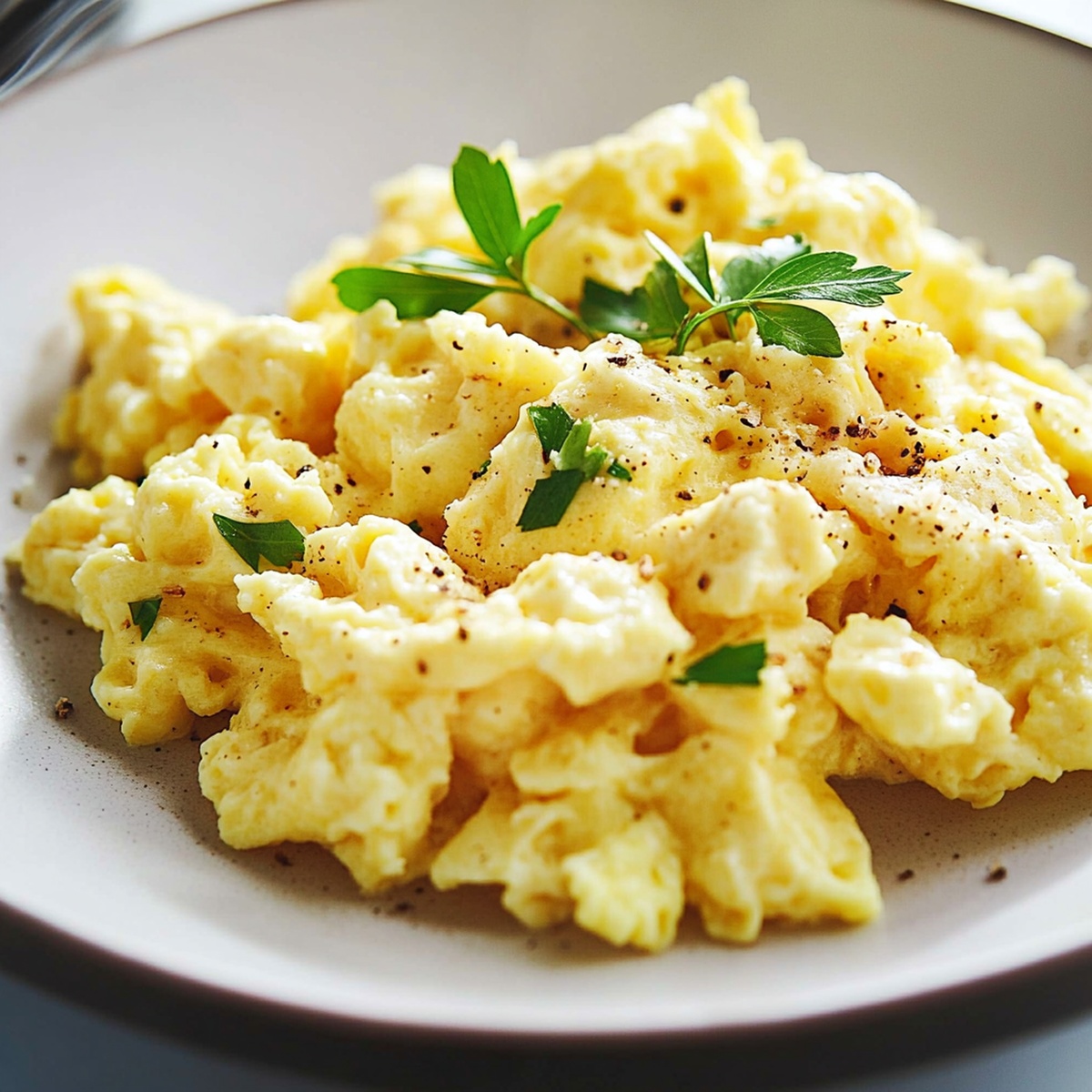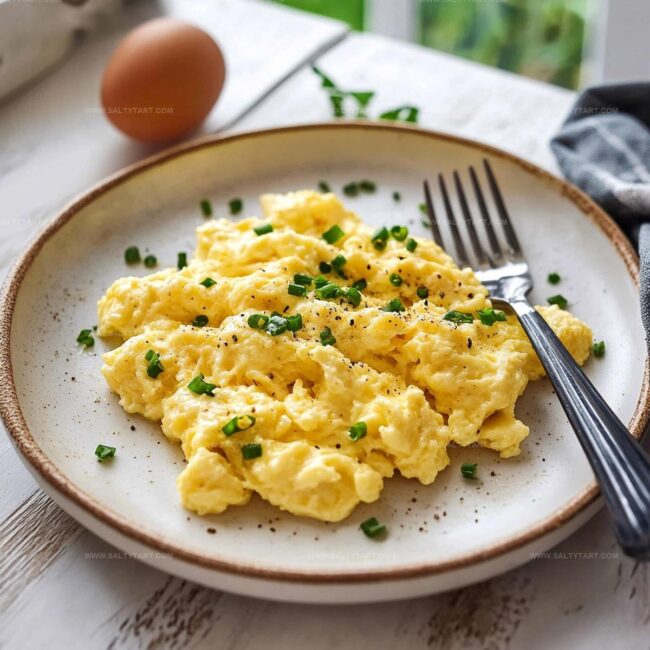The Perfect Fluffy Scrambled Egg Recipe Every Time
Whipping up a delectable scrambled egg dish feels like culinary magic in your kitchen.
fluffy clouds of golden goodness await your skillful touch.
Professional chefs and home cooks alike appreciate this simple yet elegant breakfast classic.
Each perfectly whisked bite promises a creamy, satisfying experience that delights the senses.
Seasoned with a pinch of creativity, these eggs become more than just a morning staple.
Salt, pepper, and a dash of passion can elevate this humble recipe from ordinary to extraordinary.
You’ll want to grab a fork and savor every single delicious morsel.
Variations to Try with Scrambled Eggs
Best Pairings for Fluffy Scrambled Eggs
Rich, creamy scrambled eggs pair beautifully with bold accompaniments that balance their delicate texture.
Choose a medium roast Colombian or Ethiopian coffee with bright acidity to cut through the eggs’ richness and cleanse the palate.
Select sourdough or rustic whole grain bread, lightly buttered and toasted, to provide a crunchy textural contrast against the soft scrambled eggs.
Sprinkle chopped chives, fresh dill, or parsley on top to add a zesty, bright note that enhances the eggs’ subtle flavor profile.
How to Store Fluffy Scrambled Eggs Properly
FAQs
Medium-low heat prevents eggs from overcooking and becoming tough, allowing gentle, slow cooking that creates soft, creamy curds instead of dry, rubbery eggs.
Look for soft, slightly runny curds with a glossy appearance. Remove from heat when eggs are still moist but not completely liquid, as they’ll continue cooking from residual heat.
Yes, you can skip milk. Whisking eggs thoroughly and using butter creates creamy, fluffy eggs. Some chefs prefer eggs without milk for a more pure egg flavor and texture.
Why Fluffy Scrambled Eggs Is Perfect
Ingredients for Fluffy Scrambled Eggs
Eggs:Dairy:Seasonings:How to Cook Fluffy Scrambled Eggs
Step 1: Crack and Whisk Eggs
Grab your eggs and crack them into a mixing bowl. Using a whisk or fork, blend the eggs until they transform into a smooth, sunshine-yellow mixture.
For an extra luxurious touch, splash in a bit of milk or cream to create an ultra-creamy texture.
Step 2: Prepare the Skillet
Select a non-stick skillet and place it on the stove.
Turn the heat to medium-low and let a pat of butter melt gracefully across the surface. Watch for the butter to become frothy and dance around the pan, but ensure it doesn’t turn brown.
Step 3: Pour and Let Settle
Gently cascade the whisked eggs into the buttery skillet. Allow the eggs to rest peacefully for about 30 seconds, letting the edges start to set and form delicate, soft boundaries.
Step 4: Create Soft Curds
Using a spatula, begin stirring the eggs from the outer edges toward the center. Move slowly and carefully, coaxing soft, pillowy curds to form.
This process typically takes around 2 minutes and requires a gentle touch.
Step 5: Season and Finish
Just before the eggs reach your desired doneness, sprinkle salt and freshly ground black pepper across the surface.
Remove the skillet from heat while the eggs still look slightly runny – they’ll continue cooking from residual heat. Transfer immediately to a warm plate and serve.
Tips for Fluffy Scrambled Eggs
Print
Scrambled Egg Recipe
- Total Time: 8 minutes
- Yield: 2 1x
Description
Creamy scrambled eggs dance with buttery richness, promising pure breakfast bliss. Silky curds nestled on warm toast invite morning comfort, beckoning you to savor each delectable bite.
Ingredients
Eggs:
- 4 large fresh eggs
Dairy:
- 1 tablespoon (15 milliliters) unsalted butter
Seasonings:
- 1 pinch salt
- Freshly cracked black pepper
Instructions
- Whisk eggs thoroughly in a mixing bowl until uniform in color and texture, incorporating a small amount of milk for enhanced smoothness and richness.
- Place a non-stick skillet over medium-low heat, allowing butter to melt and create a delicate, foamy surface without browning.
- Carefully transfer whisked eggs into the warm skillet, allowing them to settle for approximately 30 seconds until perimeter edges begin to solidify.
- Using a flexible spatula, gently manipulate eggs from outer edges toward the center, creating soft, pillowy curds with a creamy consistency.
- Continue stirring intermittently for roughly 2 minutes, maintaining a low temperature to prevent overcooking and preserve a tender texture.
- Sprinkle salt and freshly ground black pepper across the eggs during the final moments of cooking, ensuring even seasoning.
- Remove skillet from heat while eggs retain a slight moistness, transferring immediately to serving plates to prevent further cooking and maintain optimal fluffiness.
Notes
- Whisk eggs thoroughly to incorporate air, creating a lighter, fluffier texture with no streaky whites.
- Add a small splash of cream or milk for extra richness and softness, ensuring you don’t overdo the liquid.
- Use low and slow heat to prevent rubbery eggs, allowing gentle cooking that maintains a delicate, creamy consistency.
- Remove eggs from heat when slightly wet and glossy, as they’ll continue cooking from residual heat, preventing dry, overcooked scramble.
- Prep Time: 5 minutes
- Cook Time: 3 minutes
- Category: Breakfast, Lunch, Dinner
- Method: Sautéing
- Cuisine: American
Nutrition
- Serving Size: 2
- Calories: 220 kcal
- Sugar: 1 g
- Sodium: 230 mg
- Fat: 18 g
- Saturated Fat: 7 g
- Unsaturated Fat: 9 g
- Trans Fat: 0.3 g
- Carbohydrates: 2 g
- Fiber: 0 g
- Protein: 12 g
- Cholesterol: 185 mg





Mike Reynolds
Founder & Recipe Developer
Expertise
Farm-to-table cuisine, Seasonal recipe development, Sustainable cooking techniques, Food photography
Education
Asheville-Buncombe Technical Community College (A-B Tech)
Associate Degree in Culinary Arts
Mike studied culinary arts with a strong focus on farm-to-table principles and sustainable cooking. His training emphasized the importance of fresh, local ingredients and environmentally responsible practices in the kitchen.
Mike’s food journey began deep in the Blue Ridge Mountains, where weekends at farmers’ markets and home-cooked meals sparked a lifelong obsession with simple, seasonal eating.
After earning his Associate Degree in Culinary Arts from Asheville-Buncombe Technical Community College, he set out to bring farm-to-table cooking into everyday kitchens, without the fuss.
Mike’s philosophy is all about keeping it fresh, unfussy, and full of heart. When he’s not crafting new single-serving recipes, he’s hiking mountain trails, chatting with local farmers, or experimenting with wild ingredients in his backyard kitchen.